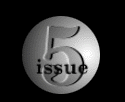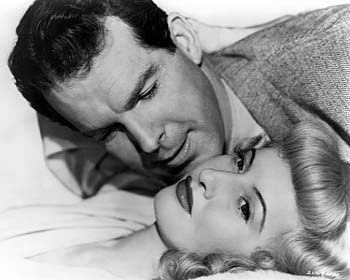
 article by Gary Morris | |
|
 Fred MacMurray and Barbara Stanwyck in Double Indemnity (© Universal Studios. All rights reserved.) American culture hounds owe a debt to the French that stretches back over a century. It's debatable whether Poe or Melville would be as popular as they are today without the backing of our Gallic pals, who saw the brilliance of these now indisputable icons long before we did. The 1930s hard-boiled school of writing--Hammett, Chandler, Cain, Woolrich--likewise benefited; works deemed classics today might have been written off as merely pleasurable pulp were it not for the enthusiasm and determination of the French. Starting in 1946, French cinemas were flooded with American product that wasn't available during the war. Films like Double Indemnity, This Gun for Hire, and The Killers were among the first of the dark, downbeat thrillers to cross the Atlantic to audiences already steeped in the pleasures of American crime fiction, and thus perhaps eager to see the cinematic extension of the style.
| |